Few ingredients reflect tradition and craftsmanship quite like Japanese matcha. Its bright green colour and smooth flavour come from careful farming – shaped by perfect timing, shaded growth, and generations of skill.
With the recent explosion of matcha popularity, supplies are tight and Japan is working hard to keep up with the domestic and international demand. Everyone wants matcha!
We recently visited Japan – the Shizuoka and Kyushu regions to visit our matcha partners. Understanding how matcha is produced, and what distinguishes one grade or flush from another, helps us appreciate the dedication behind every gram of this remarkable tea.
The Foundation of Matcha
Matcha begins its journey as a fresh leaf on a green tea bush. The harvested leaves get processed into tencha which is the raw material base for our matcha. The leaves are grown in gradually reduced sunlight over a month’s period of time.
Only the new leaves are picked. Depriving the tea plants of sunlight makes the leaves thinner, more tender, and produces a fresher, deep green colour. The leaves also contain much higher levels of chlorophyll.
70% of the sunlight is blocked and tea is shaded 25 days before harvest. 95% of the sunlight is blocked 15 days before harvest. All fields are then completely covered by black netting just days before picking. Thus resulting in tender fresh leaves ready for harvest.
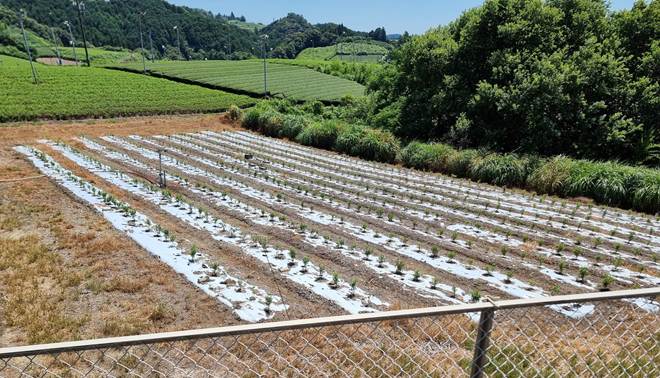


Harvest Timing: The Importance of Flushes
After the first flush is harvested, the tea tree sprouts several times. The second and third buds of the year are harvested as the second and third flush teas, respectively.
First Flush (Ichibancha) – Late April to Early May
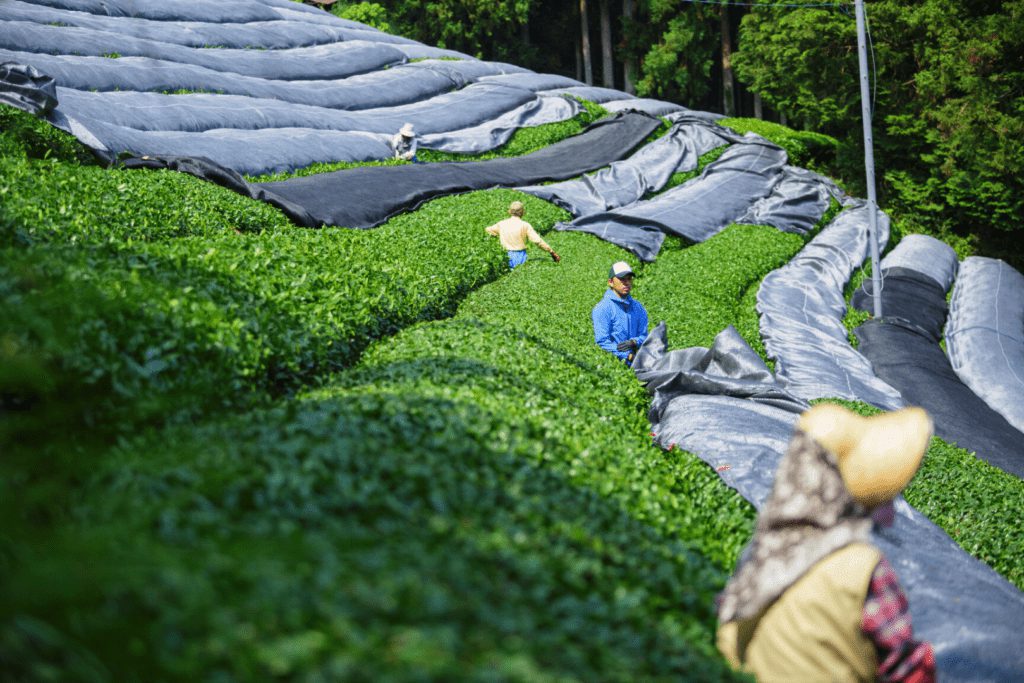
- The most prized harvest, made from young, tender leaves.
- High in amino acids and natural sweetness, with a rich umami profile (pleasant, savory taste)
- Brilliant emerald colour and creamy texture.
- Used for ceremonial-grade matcha.
Second Flush (Nibancha) – June to July
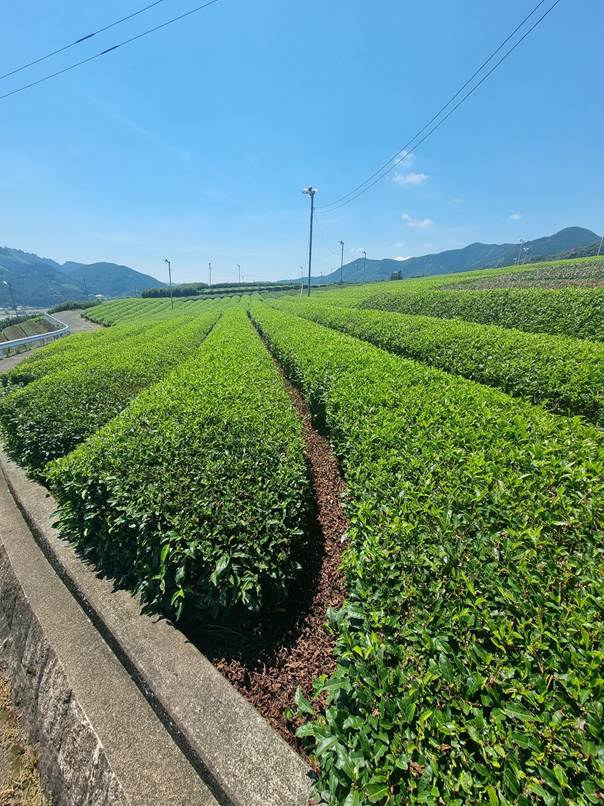
- Slightly more mature leaves with a stronger vegetal character.
- Balanced flavor – less sweetness, more astringency.
- Commonly used for premium or latte-grade matcha.
Third Flush (Sanbancha) – Late Summer

- Harvested during Japan’s warmest months, producing robust, grassy leaves.
- Lower chlorophyll and L-theanine levels, resulting in a more distinct taste.
- Typically used for culinary-grade matcha and industrial applications.
Grades of Matcha: Purpose and Profile
Producers classify their matcha into a very wide array of grades. The wine market serves as a great example. While you have various wine grapes as broader categories, each winery makes its own version, makes its own blends of grapes and each of them change from year to year as the seasons change. The matcha grade varieties are infinite! For our purposes however, it is possible to classify matcha into three broad grades, and while borders between these remain very fluid, there is no definite distinction between these. At the end of the day, it is what pleases each matcha consumer.
Ceremonial Grade:
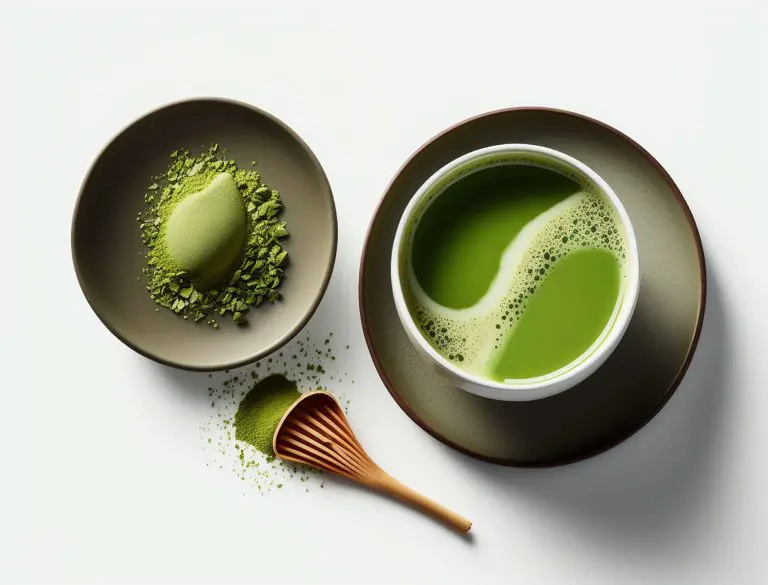
- Made from first-flush leaves.
- Naturally sweet, rich in umami, and vibrantly green.
- Traditionally enjoyed whisked with hot water – no milk or sugar.
- Used in formal Japanese tea ceremonies and high-end retail.
Premium or Latte Grade:
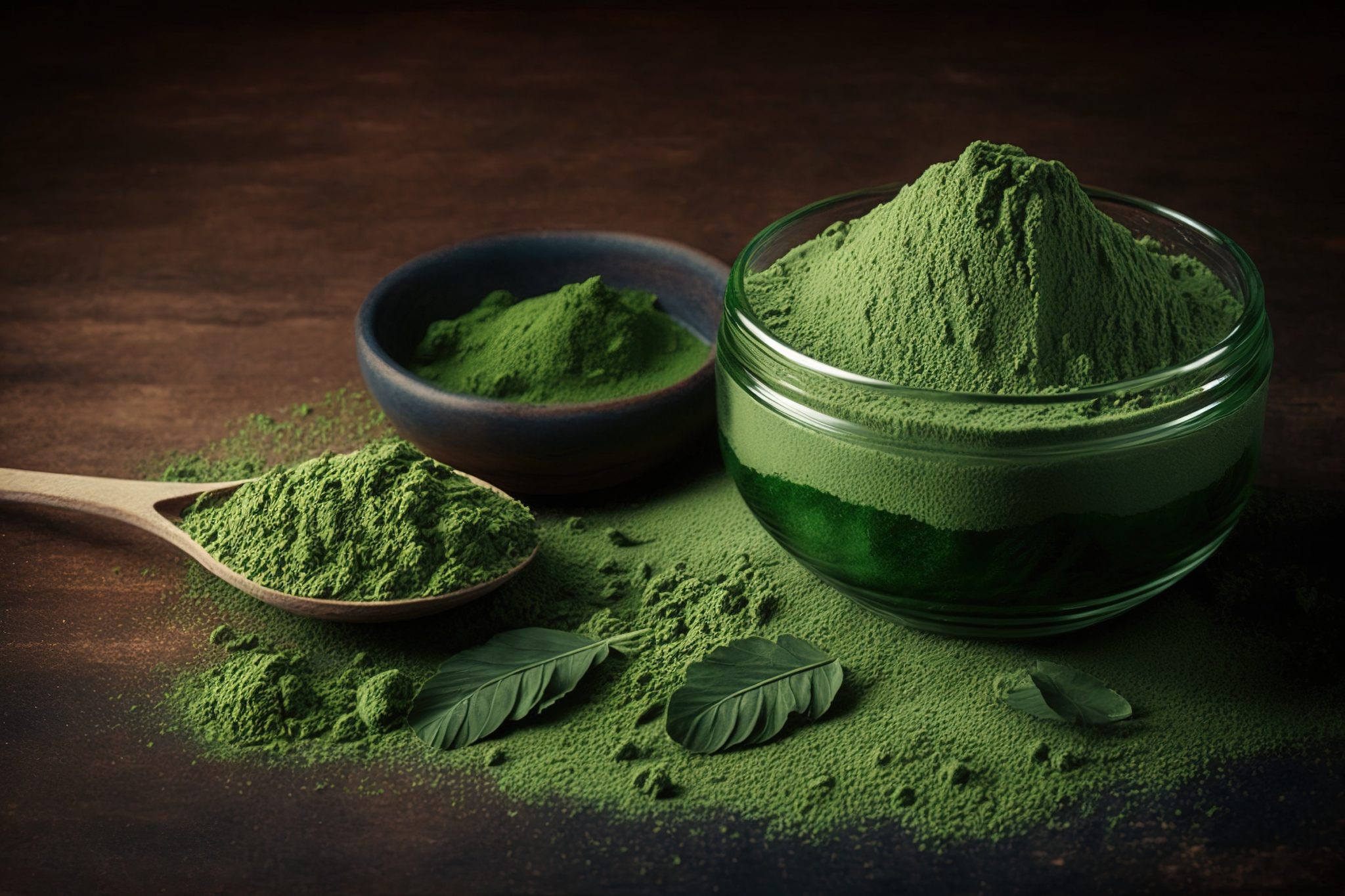
- A blend of first and second flushes.
- Balanced profile with mild bitterness that complements milk-based drinks.
- Popular in matcha lattes and modern beverages
Culinary Grade:

- Produced from later flushes or lower leaf positions
- Stronger flavour, coarser texture, and muted colour.
- Designed for recipes, including baked goods, smoothies and ice cream.
After harvest, the leaves are steamed, dried, and stone-ground into an ultra-fine powder. Because matcha is consumed in its entirety, not steeped and discarded, every step of cultivation and processing directly affects the final flavour and nutrition.
Traditional Processing in Detail
Once harvested, the process of transforming fresh leaves into tencha – and ultimately matcha – requires precision and care. Each stage ensures purity, safety, and the delicate balance of color and aroma.
- Steaming and Moistening:
Immediately after harvest, leaves are steamed to halt oxidation and preserve their deep green hue. - Primary Drying (15–20 minutes at 100–120 °C):
The steamed leaves are gently dried to remove excess moisture while protecting volatile flavor compounds. - Separation of Large Particles:
Larger stems and coarse fragments are sifted out to maintain consistency. - Secondary Wind Drying (15 minutes at 90–110 °C):
A controlled air-drying step ensures even dehydration and prevents microbial growth. - Air Separation of Stems and Veins:
Fine air pressure removes lighter sticks and leaf veins, isolating the most tender leaf material.
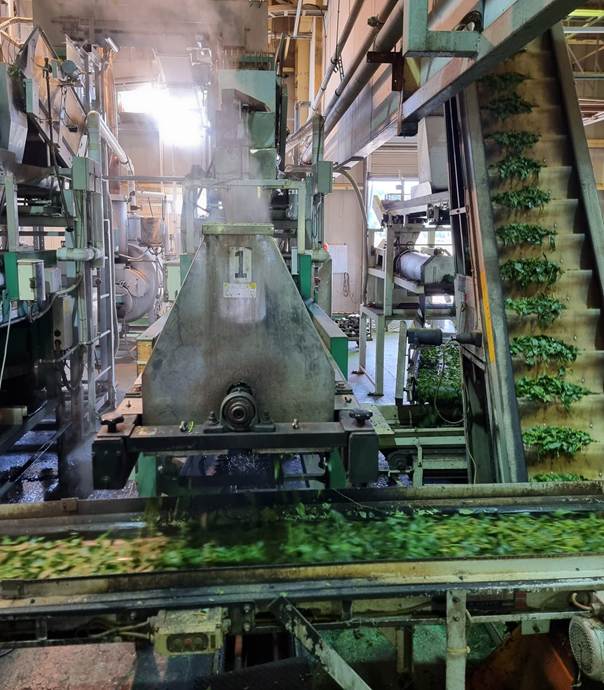
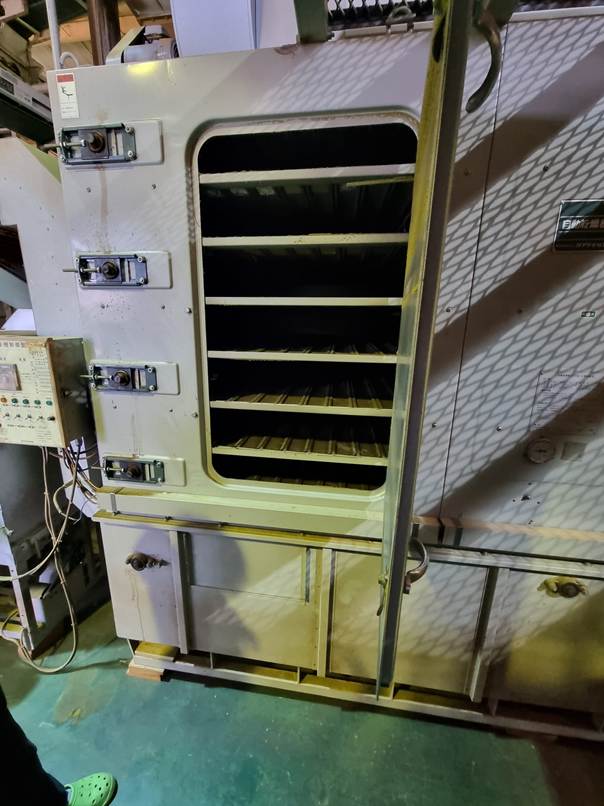
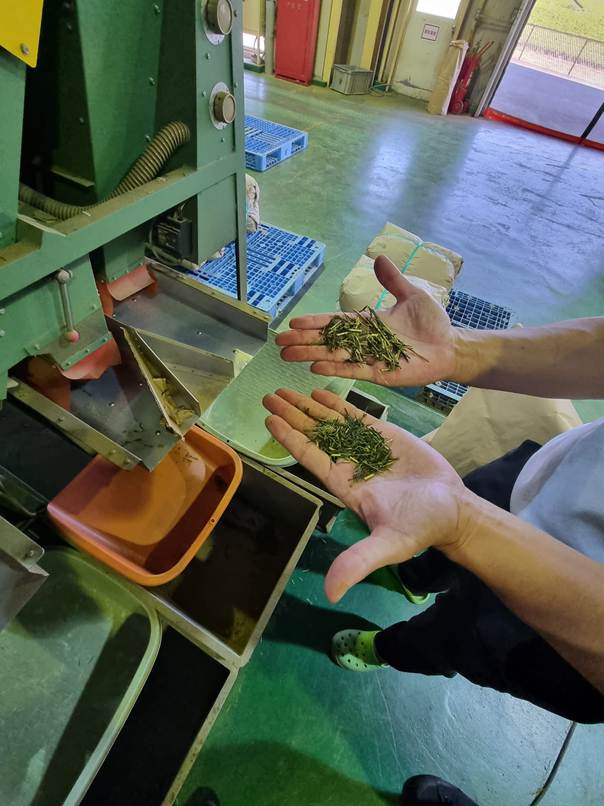
Refinement and Grinding
During refinement processing, the tencha undergoes additional purification and controlled processing before being milled into matcha:
- Coarse Crushing: Tencha is first loaded into a crusher to achieve a uniform texture.
- Filtering and Magnet Purification: Material passes through a 2 mm sieve and magnetic filters to remove impurities.
- Heat Treatment: The tea is briefly heated with hot air at 150 °C to eliminate bacteria without altering flavor.
- Testing and Storage: Processed tencha is packed into 15 kg bags, sampled for quality testing, and stored for two days.
- High-Pressure Air Grinding: After approval, tencha is ground into fine matcha powder using precision air grinders, which maintain freshness and avoid heat damage.
- Final Packaging: The finished matcha is vacuum-sealed in 10 kg bags for optimal preservation.
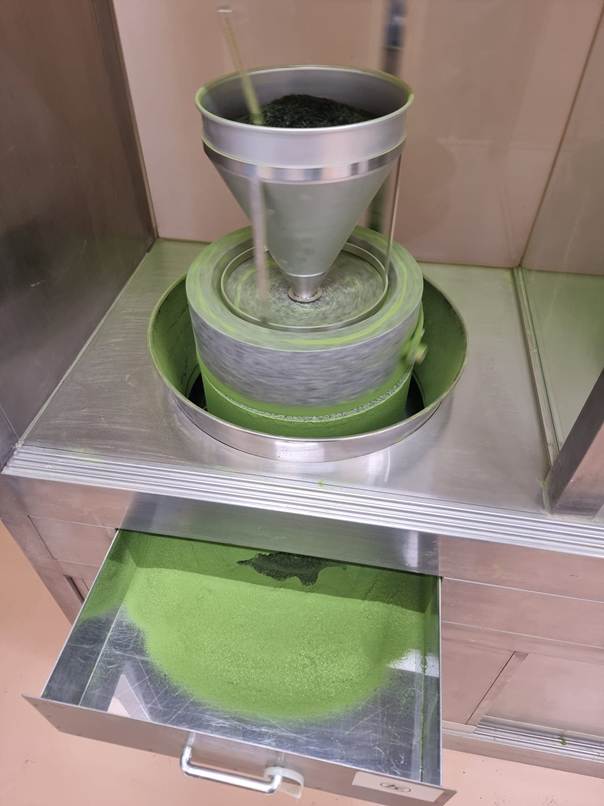
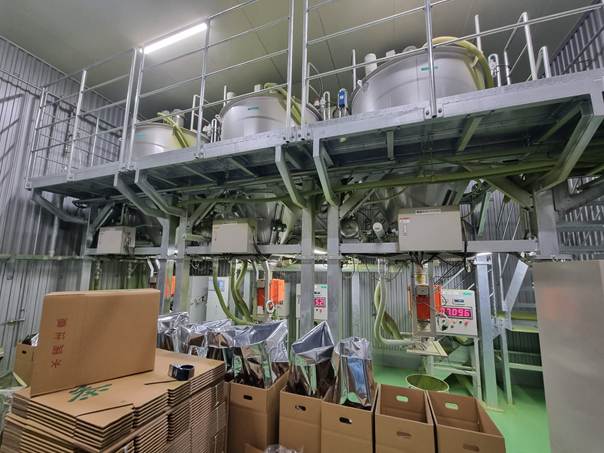
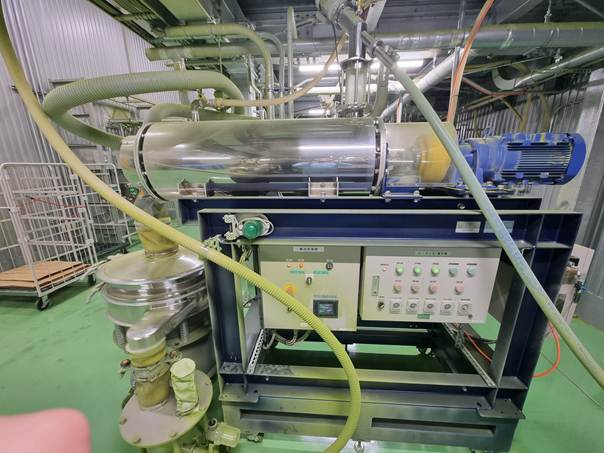
Taste Master Testing
Professional matcha graders or chashi (tea masters) assess matcha much like sommeliers assess wine. Evaluation and grading done by comparing aroma, colour, texture, shade, taste, sweetness, bitterness, aftertaste, umami flavor:
When selecting matcha for commercial use, several indicators reveal true quality:
- Color: Bright, vibrant green signifies proper shading and freshness.
- Aroma: Fresh, sweet, grassy, and umami-rich scents are ideal.
- Texture: High-quality matcha feels ultra-fine and silky (5–10 microns). This indicates careful milling and air-controlled grinding.
- Flavor: Ceremonial-grade matcha has a smooth, rich and natural sweetness with a deep umami and almost no bitterness. Culinary grades are sharper, more astringent, meant for blending or cooking.


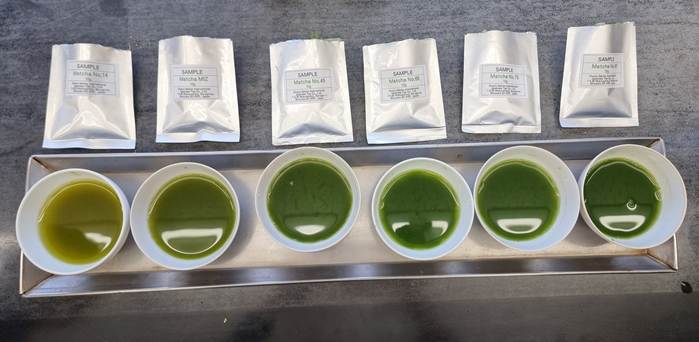
Matcha is more than just a tea – it’s a reflection of Japan’s patience and precision.
At Abbott Blackstone International, we share that same appreciation for craft and precision. We believe great ingredients come from great partnerships, and we are proud to work with producers who prioritise authenticity, grade, origin and full-service traceability.
Contact us for more information about our organic, premium matcha!
© Copyright Abbott Blackstone International GMBH
